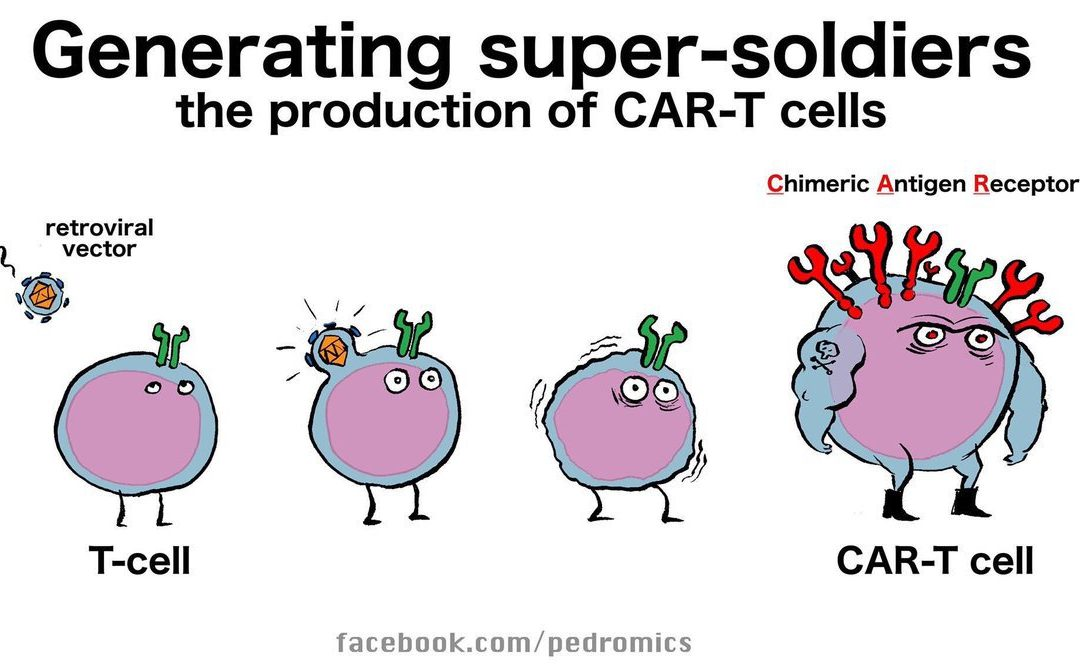Choose your Article Focus | NGS | Molecular & Serology
Highlights from the ESHG and ESHRE 2020 Virtual Conferences
Category: Reproductive Health, PGT, Women's health, NIPT, Non-invasive Prenatal Testing, NGS, Preimplantation genetic testing
Posted by
Agnes Caruso,PhD on Aug 20, 2020 12:00:00 AM
The plans for this year’s NIPT and PGT conferences, like many others, were quickly derailed by the COVID-19 pandemic. The ESHG and ESHRE Annual Meetings were moved to virtual space and even though the format was a new experience, the science did not disappoint. Here we will share some of the highlights from the sessions.
0 Comments Click here to read/write comments
Design and Development of Compromised FFPE Reference Materials
Category: NGS
Posted by
Dana Ruminski Lowe, Ph.D. on Aug 11, 2020 12:00:00 AM
Tumor profiling assay workflows start from a tissue biopsy sample that is formalin fixed and paraffin embedded (FFPE), a process that introduces various kinds of damage in the nucleic acids in the tissue specimen. Reference materials that closely mimic the damage profile of patient FFPE samples are lacking. Depurination, depyrimidination, deamination, oxidation, nicks, and double strand breaks may be found in DNA extracted from FFPE tissue, despite the use of extraction kits that attempt to repair some of this damage. We have developed a formalin-damaged, multiplexed biosynthetic reference material, Seraseq® Compromised FFPE Tumor DNA, as well as a companion wild-type (WT) material, Seraseq Compromised FFPE WT, to mimic the damage found in patient samples that can be used to assess the entire tumor profiling workflow. We compared the performance of these reference materials in downstream assays to that of FFPE material with minimal DNA damage such as the Seraseq FFPE WT (DNA/RNA) RM product.
0 Comments Click here to read/write comments
Do COVID-19 infections affect NIPT?
Category: COVID-19, NIPT, Non-invasive Prenatal Testing, NGS, SARS-CoV-2
Posted by
Prof. Joris Vermeesch, PhD on Mar 26, 2020 12:00:00 AM
We would like to present a guest blog from Prof. Joris Vermeesch, Ph.D. This blog originally posted on the Noninvasive Prenatal Testing Online Resource Page on the 17th March summarizes our current understanding of any possible interference of SARS-CoV-2 infection on the outcomes of NIPT testing.
0 Comments Click here to read/write comments
Assessing RNA Extraction with FFPE Fusion RNA Reference Materials
Category: NGS, RNA fusion, reference materials
Posted by
Dan Brudzewsky on Mar 11, 2020 12:00:00 AM
This is a third blog in a series on RNA fusions, this time focusing on how the FFPE Fusion RNA materials are used as RNA extraction controls.
0 Comments Click here to read/write comments
Diagnostic Testing Schemes for NTRK Cancers: All Roads Lead to NGS
Category: SeraSeq, NTRK, NGS, RNA fusion
Posted by
Russell Garlick, PhD on Feb 12, 2020 12:00:00 AM
New treatment options for cancer patients with neurotrophic tyrosine kinase (NTRK) rearrangements are a tremendous success, demonstrating first-hand the importance of precision diagnostics. The FDA granted accelerated approval of Bayer's VITRAKVI (larotrectinib) for adult and pediatric solid tumors containing NTRK fusions1. The approval was one of the first tissue agnostic approvals based on genotyping results, and included patients with unresectable or metastatic cancer. For 12 cancer types, the overall response rate was 75% with 22% complete response and 53% partial response. In addition to VITRAKVI, Genentech's entrectinib has a "breakthrough" status and is being evaluated for the potential treatment of advanced or metastatic tumors that harbor NTRK or ROS1 gene rearrangements.
0 Comments Click here to read/write comments
Evolution of non-invasive prenatal testing (NIPT)
Category: New Reference Material, trisomy, Reproductive Health, NIPT, Non-invasive Prenatal Testing, NGS, #Quality, reference materials
Posted by
Agnes Caruso,PhD on Feb 5, 2020 12:00:00 AM
Prenatal screening for aneuploidy has changed dramatically since the 1970s. Non-invasive methods developed in the 1980s and 1990s, combined measurements of maternal serum analytes and ultrasonography. The problem with those methods was not just a high false-negative rate of 12% to 23%, a high positive rate of 5% and a poor sensitivity, ranging from 50% to 95% 1. Uncertain results frequently led to invasive procedures such as amniocentesis or chorionic villi sampling to perform karyotyping on fetal samples. Both of those procedures carry a risk of miscarriage.
0 Comments Click here to read/write comments
Multi-Lab Study of Fusion RNA Reference Standards for Targeted NGS
Category: NTRK, NGS, RNA fusion, reference materials, AACR
Posted by
Andrew Anfora, PhD on Jan 28, 2020 12:00:00 AM
Sourcing assay validation samples as positive run controls or workflow controls in targeted NGS RNA fusion assays remains a challenge today. This is further exacerbated with clinical labs looking to provide validated NGS assays for patient stratification in a host of new drugs in clinical trials or newly approved targeting fusion genes, such as NTRK genes (Larotrectinib, Loxo/Bayer) and Entrectinib (Genentech/Roche) for rare cancers in adult and pediatric patients, and RET (Loxo/Lilly) for lung cancer. SeraCare produces several RNA fusion reference materials. This article describes the development and multi-laboratory evaluation of a pan-cancer multiplexed Fusion RNA reference standard for analysis of clinically relevant fusion genes in solid tumors. The evaluation was conducted at 5 different laboratories on different NGS platforms (amplicon- and hybridization capture-based) as well as at different RNA inputs within a platform. Results highlight the utility of this Fusion RNA reference material to support clinical NGS assays as positive controls in solid tumor cancer patient stratification for many of these fusion-based targeted therapies.
0 Comments Click here to read/write comments
A Multi-Lab Study of Fusion RNA Reference Standards Using Amplicon- and Hybrid Capture-based Targeted NGS Panels
Category: NGS, Assay Development, RNA fusion
Posted by
Andrew Anfora, PhD on Jan 28, 2020 12:00:00 AM
Introduction Sourcing assay validation samples as positive run controls or workflow controls in targeted NGS RNA fusion assays remains a challenge today. This is further exacerbated with clinical labs looking to provide validated NGS assays for patient stratification in a host of new drugs in clinical trials or newly approved targeting fusion genes, such as NTRK genes (Larotrectinib, Loxo/Bayer) and Entrectinib (Genetech/Roche) for rare cancers in adult and pediatric patients, and RET (Loxo/Lilly) for lung cancer. SeraCare produces several RNA fusion reference materials. This article describes the development and multi-laboratory evaluation of a pan-cancer multiplexed Fusion RNA reference standard for analysis of clinically relevant fusion genes in solid tumors. The evaluation was conducted at 5 different laboratories on different NGS platforms (amplicon- and hybridization capture-based) as well as at different RNA inputs within a platform. Results highlight the utility of this Fusion RNA reference material to support clinical NGS assays as positive controls in solid tumor cancer patient stratification for many of these fusion-based targeted therapies. Data Discussion Fusion RNA Reference Standard Development 18 clinically actionable biosynthetic fusion genes were transcribed and blended with reference cell line human cell line (GM24385, from GIAB), The RNA fusion constructs in the Fusion RNA reference material were blended at ~1500 copies per uL, and measured by digital droplet PCR (ddPCR) measurements as well as by an orthogonal targeted NGS assay (Archer FusionPlex Solid Tumor and MiSeq v2 300 cycle kit). Results are shown in Figure 1 below. Figure 1: Concentration (blue) and number of unique start sites (green) measured for each fusion RNA in the fusion reference material as determined by RT-dPCR and targeted NGS panel, respectively. Data represent average of three replicate measurements. As shown in Figure 1, all 18 gene fusions in the Fusion RNA reference material were detected on the Archer ST assay, at different levels of abundance. Approximately 50% of the variants showed similar relative abundance between ddPCR and NGS measurements. ~25% of the variants showed an apparent increase in relative abundance as measured by ddPCR, and the remaining ~25% of the gene fusions showed an increase in relative abundance as measured by NGS. A multi-laboratory evaluation of the Fusion RNA reference material was conducted at 5 laboratories (Site A – E, see Table 1). However, this article will focus on evaluations involving the Archer FusionPlex Solid Tumor and custom Solid Tumor-based targeted NGS panels. For discussion of all data generated by all laboratories listed in Table 1, check out our poster presentation from AACR 2018. Table 1: Assay, input, and analysis used at Site A – E. Figure 2 demonstrates the reproducibility of the Archer FusionPlex Solid Tumor assay across multiple sites and operators from the highly multiplexed contrived Fusion RNA reference material. The discordant data points are likely due to a combination of different operators, use of different analysis software versions, and differences in replicate measurements between sites. To account for the multitude of panel-based assays, one laboratory used a custom panel assay to evaluate the RNA fusion reference material. Beta test Site D used the fusion reference material with a customized Archer FusionPlex assay as shown in Figure 3. The functionality of the customized panel was clearly demonstrated, in addition, a limit of detection study was conducted with the abundant reference material, with most fusions detected at all tested input amounts.[1] [1] For another RNA fusion limit of detection study see our AACR 2019 poster. Summary SeraCare has developed a reference material that contains 18 clinically relevant RNA fusions. The RNA fusion reference material was evaluated at 6 different laboratories. Results of these analysis highlight the robustness of the Seraseq Fusion RNA reference materials in multi-lab concordance studies as well as a tool uniquely suited for limit of detection (LoD) studies. The RNA fusion reference material is also used in analytical validation of targeted NGS panels, and as an objective reference standard for inter-laboratory comparison of NGS assay performance. A similar multi-lab evaluation of the FFPE Fusion RNA reference materials will be published shortly.
0 Comments Click here to read/write comments
Making the Shift from Technological Innovation to Operational Excellence: Delivering on the Promise Of Next-Generation Sequencing for Personalized Medicine
Category: clinical genomics, NGS
Posted by
Peter Duncan on Apr 22, 2019 12:00:00 AM
As originally seen in The Journal of Precision Medicine March 2019. Targeted therapies and now recently, immunotherapies, have demonstrated great promise towards increasing response rates, as well as duration of response for cancer patients. This is often achieved by understanding biomarkers associated with therapeutic response and then stratifying patients accordingly.
0 Comments Click here to read/write comments
AACR 2019 Day One Highlights: Next-Generation Car T Cells
Posted by
Catherine Huang, PhD on Apr 2, 2019 12:00:00 AM
I’m excited to be at the Annual AACR meeting at the Georgia World Congress Center in Atlanta, GA. AACR is my favorite scientific meeting because each year I am inspired by the remarkable research presented and leave the conference feeling I’ve learned an incredible amount in just a few days.
0 Comments Click here to read/write comments












